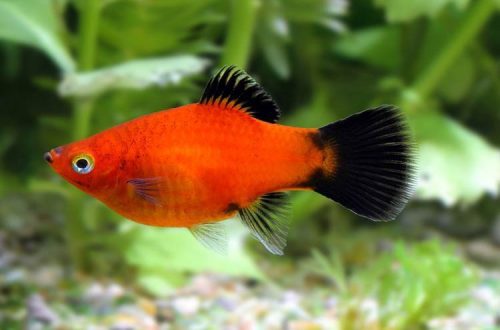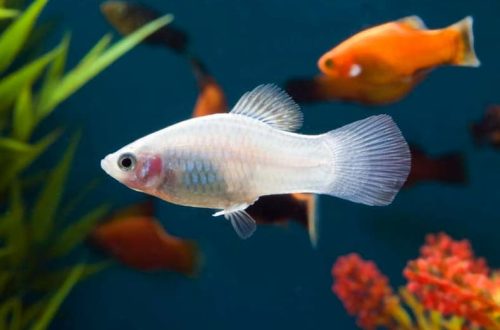
Killy the Clown
Killy’s Clown or Torch Epiplatis, scientific name Epiplatys annulatus, belongs to the Nothobranchiidae family. Bright original and mobile fish, relatively easy to breed and unpretentious. There are several varieties of this species, depending on the region of origin, with a joint content, hybridization is possible. Therefore, in order to avoid confusion, professional breeders indicate additional geographic labels in the name, for example, Maca, Conakry, Robertsport, Monrovia, etc., indicating a specific area where one or another species lives.

Habitat
The natural habitat is the coastal lowlands of southern Guinea and Sierra Leone to Liberia in the west of the African continent. The Killy clown prefers low-lying swamps, slow moving streams and small rivers in areas of open savannas and tropical rainforests, where it keeps among riparian vegetation or aquatic plants. Often found in brackish waters.
Description
A miniature slender fish with a somewhat compressed head, the structure of the mouth is adapted to capture food from the surface. Males are somewhat larger than females, they are distinguished by wide fins and bright coloration with alternating wide contrasting stripes. Most notable is the tail, which resembles a torch in shape and color.
Food
In nature, they feed on terrestrial and aquatic invertebrates and other zooplankton. In a home aquarium, it will accept any dry food of a suitable size. It is also recommended to include meat products in the daily diet in frozen or live form, for example, brine shrimp, daphnia, bloodworm, grindal worm, etc. Feed 2-3 times a day in an amount eaten in 5 minutes. Dry food should be exclusively floating.
Maintenance and care
A group of fish of 8-10 individuals will feel great in a tank of 40 liters or more. The design should use a large number of plants, both rooting and floating. The latter provide additional shading, since Epiplatis torch does not like bright light. The substrate is sandy with few natural hiding places in the form of snags, tree branches or roots. It is advisable to add a few dry leaves, in the process of decomposition, they release natural humic substances that color the water in a slightly brown color inherent in wetlands. Leaves should be updated once a week.
Be careful when choosing a filter, it should provide effective cleaning, but at the same time not create excessive water movement, the fish cannot resist the current. Other minimum equipment required consists of a heater, aerator, and a lighting system set to low power.
Water conditions are typical for most swamps – the pH value is below 7.0 and the hardness parameters are not higher than 10. More details about the pH and dGH parameters in the “Hydrochemical composition of water” section. To maintain biological balance, it is required to renew part of the water (about 20% of the volume) weekly with fresh water, while it must have identical indicators and temperature, since the fish are extremely sensitive to changes in external conditions. The concentration of sea salt is within 1–2 gr. for 1 liter of water.
Behavior and Compatibility
Peaceful friendly species, compatible with other fish of similar size and temperament. Larger species should be avoided. Optimal neighbors are obtained from small tetras, neons, other Killy fish, some cyprinids, viviparous. They prefer to stay in a group, a flock of 8-10 individuals is welcome, in which they will show more saturated colors and will not be so shy in the presence of other species.
Breeding / breeding
It is easy to breed in a home aquarium, does not require the creation of special conditions, offspring can be produced throughout the year. Spawning is recommended to be carried out in a separate tank, as parents or other fish may eat the fry. The spawning aquarium is equipped with a simple sponge filter, a heater and a lamp for lighting. In the design, it is desirable to use thickets of richia, Javanese moss and similar plants that form dense bushes where females lay their eggs. A few dry leaves are also added, in this case they not only enrich the water with tannins, but also contribute to the growth of colonies of microorganisms and beneficial bacteria, which are natural microscopic food for fry.
The approach of the mating season is characterized by a noticeable increase in the female’s abdomen and active signs of attention from the males. At this point, several females and a male are placed in a spawning aquarium. A few days later, when the eggs are laid, the fish are returned back. The fry appear after 9–12 days at a temperature of 24–25 ° C, at the initial stage of life they will feed on microorganisms present in the water and on the ground, then additional nutrition should be given in the form of Artemia nauplii, ciliates, dry flakes ground into flour.





